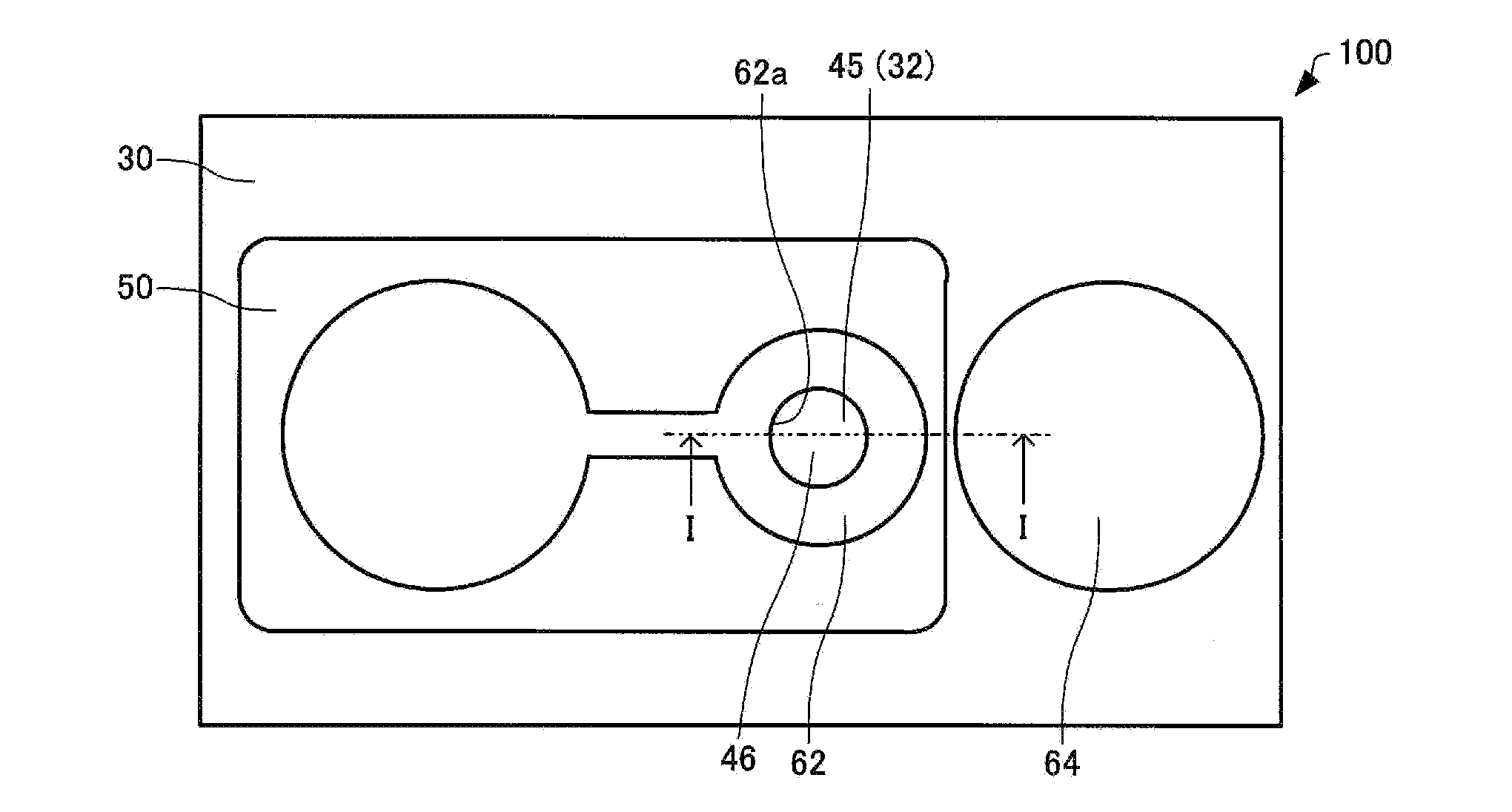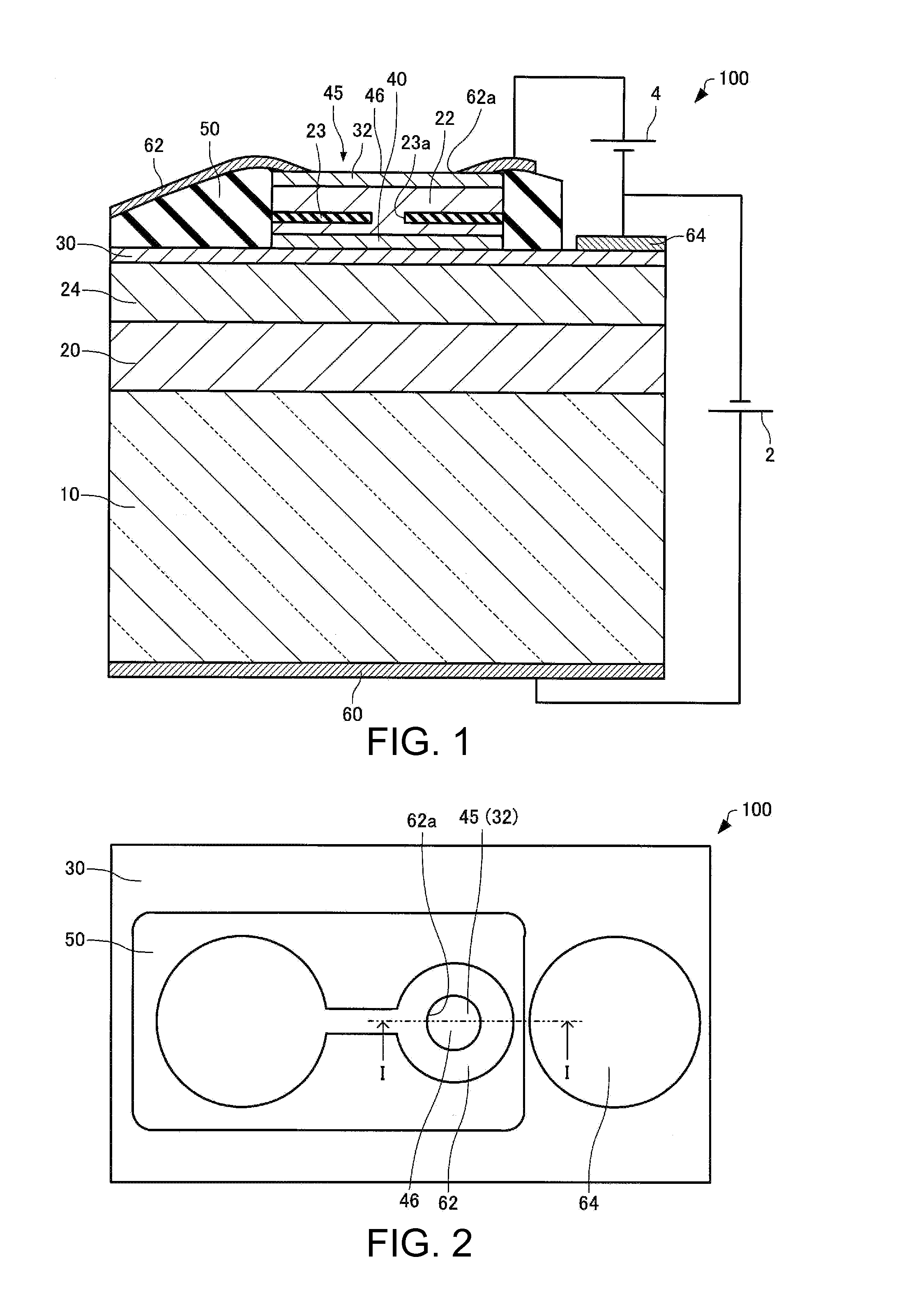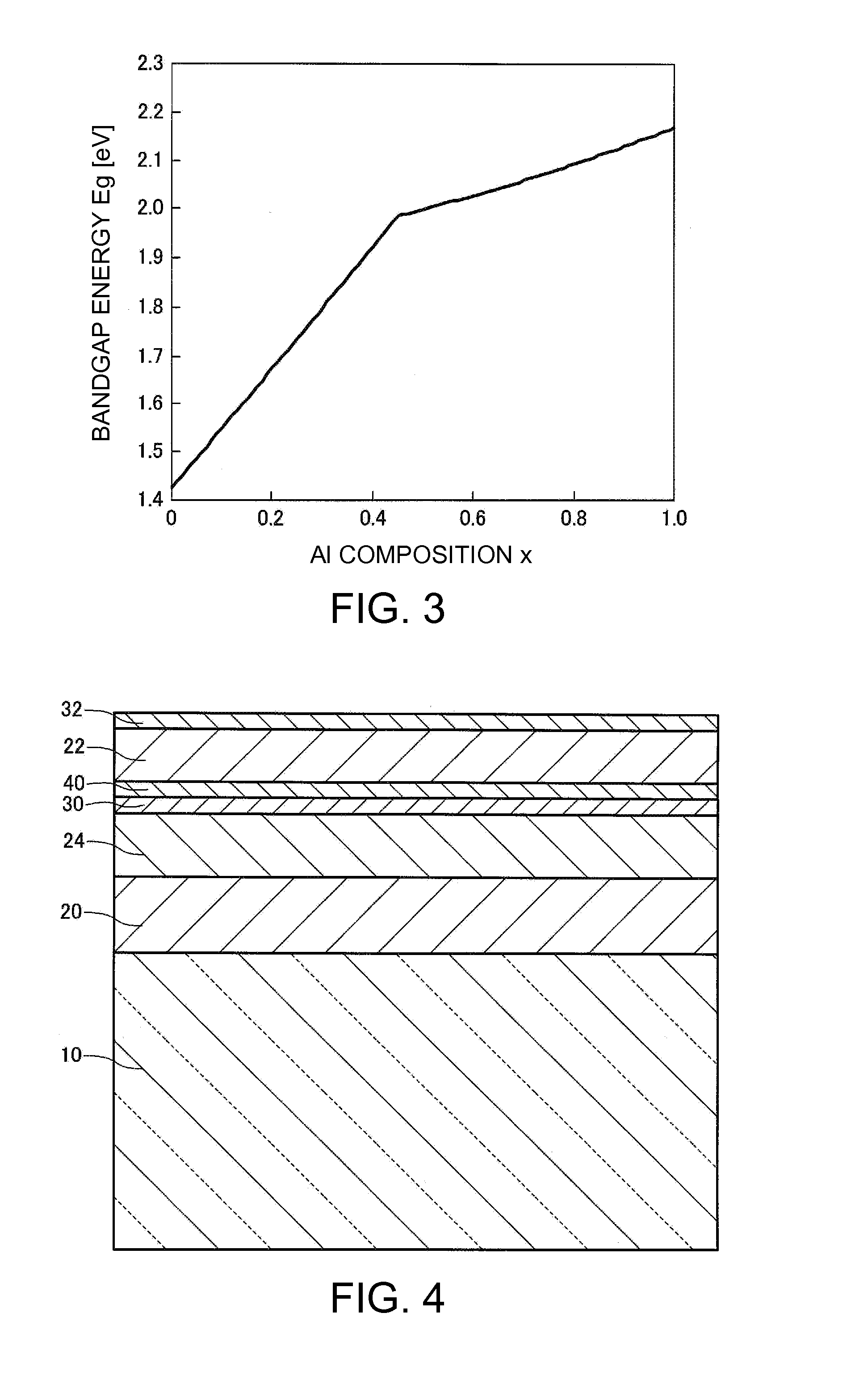Light emitting device and atomic oscillator
a technology which is applied in the field of light emitting devices and atomic oscillators, can solve the problems of difficult to vary the wavelength with a small variation, large wavelength variation, and light emitting devices, and achieve the effect of suppressing the refractive index variation and surely polarizing the light generated
- Summary
- Abstract
- Description
- Claims
- Application Information
AI Technical Summary
Benefits of technology
Problems solved by technology
Method used
Image
Examples
first embodiment
1. First Embodiment
1.1. Light Emitting Device
[0049]Firstly, a light emitting device according to a first embodiment will be explained with reference to the accompanying drawings. FIG. 1 is a cross-sectional view schematically showing the light emitting device 100 according to the first embodiment. FIG. 2 is a plan view schematically showing the light emitting device 100 according to the first embodiment. It should be noted that FIG. 1 is a cross-sectional view along the I-I line shown in FIG. 2.
[0050]As shown in FIGS. 1 and 2, the light emitting device 100 includes a substrate 10, a first semiconductor multilayer mirror 20, a second semiconductor multilayer film mirror 22, a third semiconductor multilayer film mirror 24, a first contact layer 30, a second contact layer 32, an active layer 40, an insulating layer 50, a first electrode 60, a second electrode 62, and a third electrode 64. The light emitting device 100 is a surface emitting semiconductor laser (Vertical Cavity Surface E...
experimental example
1.3. Experimental Example
[0090]Hereinafter, an experimental example will be shown, and the present embodiment of the invention will more specifically be explained. It should be noted that the invention is not at all limited by the following experimental example.
1.3.1. Configuration of Light Emitting Device
example 1
(1) Example 1
[0091]As Example 1, the light emitting device shown in FIG. 1 was used. As the substrate 10, an n-type GaAs substrate was used. As the first semiconductor multilayer film mirror 20, there was used what was obtained by alternately stacking 20 pairs of n-type Al0.15Ga0.85As layers and n-type Al0.9Ga0.1As layers on each other. As the third semiconductor multilayer film mirror 24, there was used what was obtained by alternately stacking 5 pairs of i-type Al0.15Ga0.85As layers and i-type Al0.9Ga0.1As layers on each other. As the first contact layer 30, an n-type GaAs layer was used. As the active layer 40, there was used what was obtained by stacking an n-type Al0.3Ga0.7As layer, the quantum well layer formed of an i-type GaAs layer and an i-type Al0.3Ga0.7As layer, and a p-type Al0.3Ga0.7As layer on each other. As the second semiconductor multilayer film mirror 22, there was used what was obtained by alternately stacking 25 pairs of p-type Al0.15Ga0.85As layers and p-type A...
PUM
 Login to View More
Login to View More Abstract
Description
Claims
Application Information
 Login to View More
Login to View More - Generate Ideas
- Intellectual Property
- Life Sciences
- Materials
- Tech Scout
- Unparalleled Data Quality
- Higher Quality Content
- 60% Fewer Hallucinations
Browse by: Latest US Patents, China's latest patents, Technical Efficacy Thesaurus, Application Domain, Technology Topic, Popular Technical Reports.
© 2025 PatSnap. All rights reserved.Legal|Privacy policy|Modern Slavery Act Transparency Statement|Sitemap|About US| Contact US: help@patsnap.com



